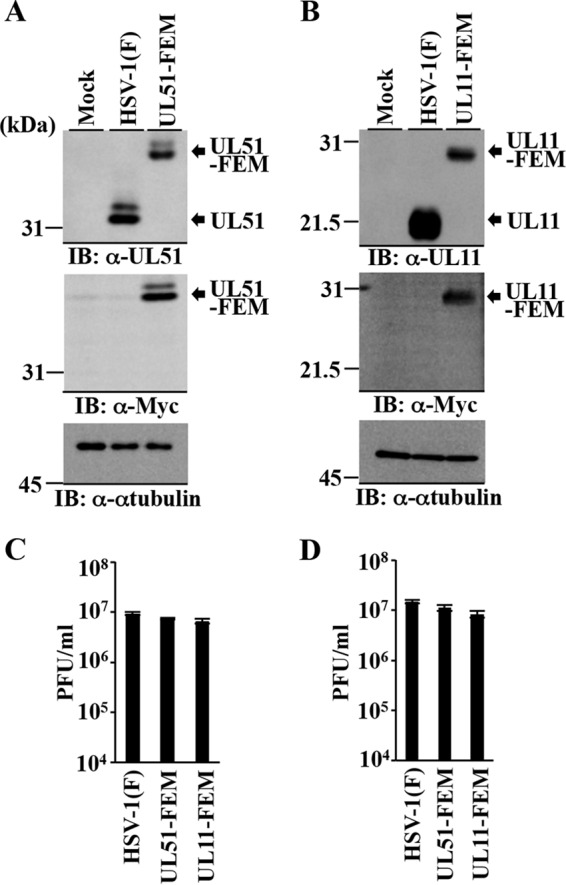FIG 2.

Characterization of the recombinant viruses expressing FEM-tagged UL51 and UL11. (A) Vero cells were mock infected or infected with wild-type HSV-1(F) or YK5019 (UL51-FEM) at an MOI of 5 for 18 h and then analyzed by immunoblotting (IB) with the indicated antibodies. (B) Vero cells were mock infected or infected with wild-type HSV-1(F) or YK5020 (UL11-FEM) at an MOI of 5 for 18 h and then analyzed by immunoblotting with the indicated antibodies. (C and D) Vero cells were infected with wild-type HSV-1(F), YK5019 (UL51-FEM), or YK5020 (UL11-FEM) at an MOI of 5 (C) or 0.01 (D). Total virus from cell culture supernatants and infected cells was harvested at 18 h (C) or 48 h (D) postinfection and assayed on Vero cells. Each data point is the mean ± standard error from the results of triplicate samples. Differences in viral yields between HSV-1(F) and YK5019 (UL51-FEM) and between HSV-1(F) and YK5020 (UL11-FEM) were not statistically significant by analysis of variance (ANOVA) and Dunnett's test. Data are representative of three independent experiments.
